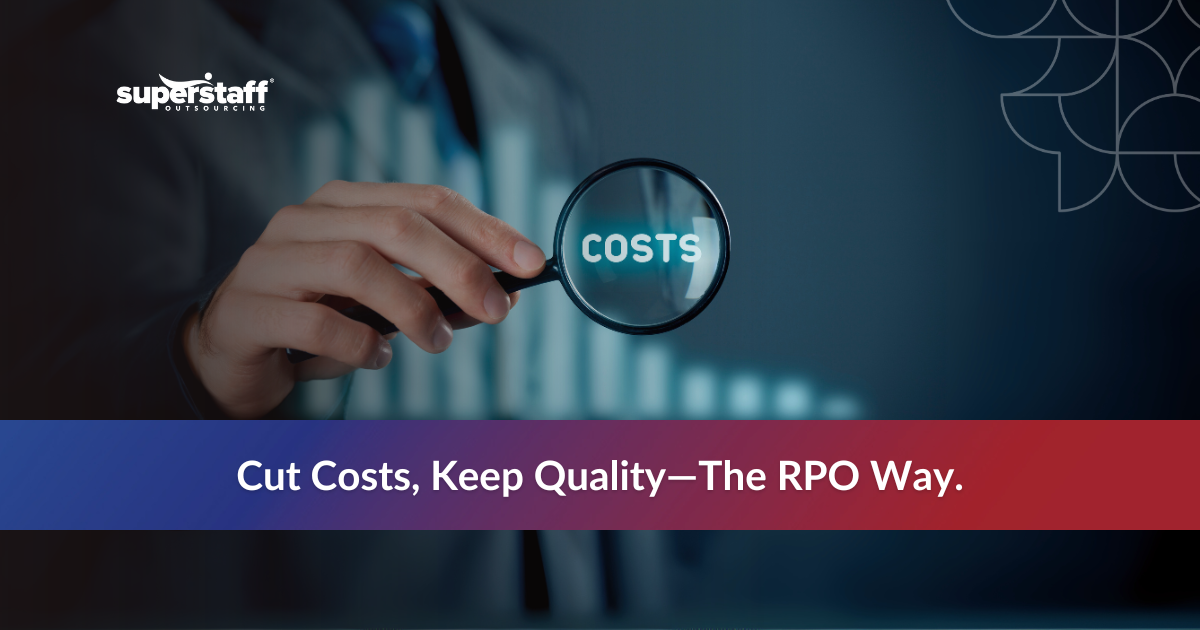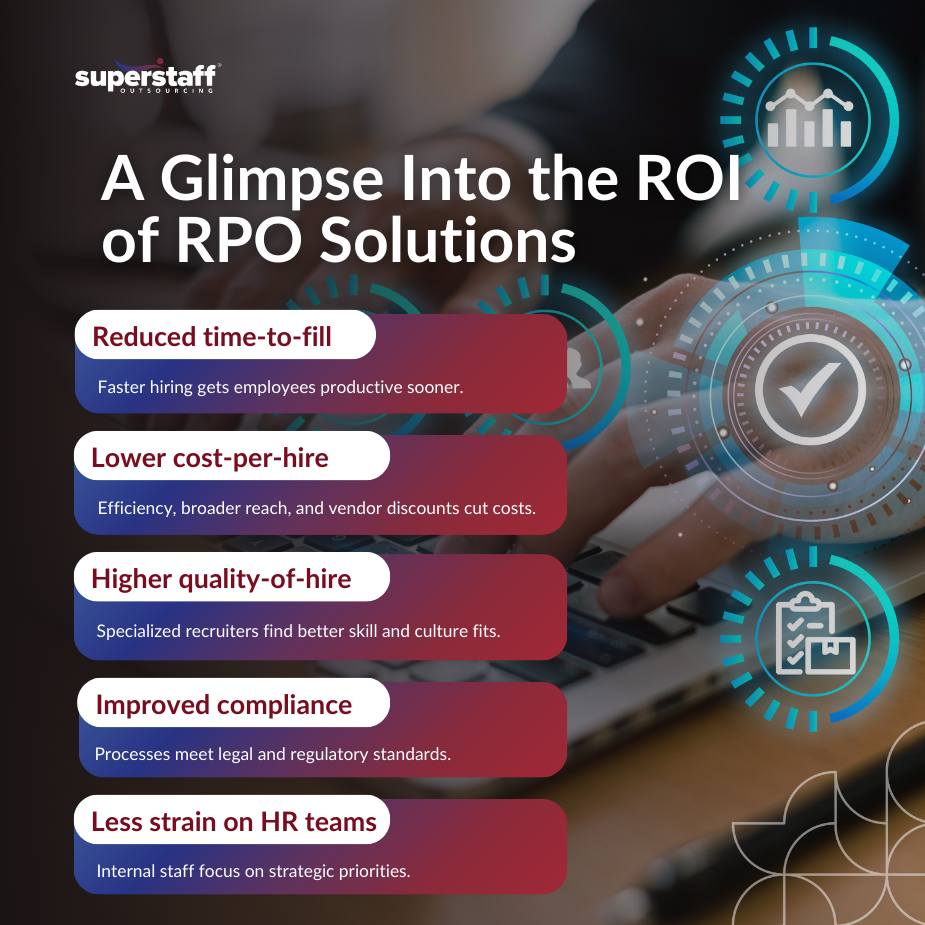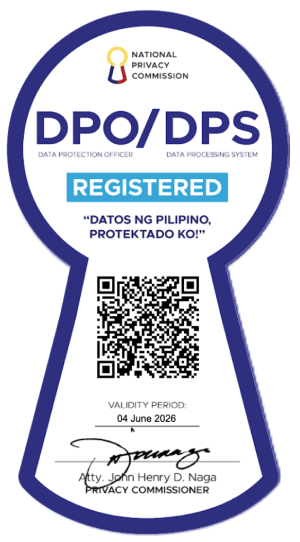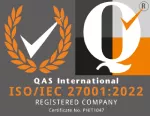
Hiring the right talent is expensive, but hiring the wrong talent is even costlier, draining budgets, slowing productivity, and increasing turnover risk. In today’s competitive labor market, many organizations find themselves caught between conflicting priorities: the need to hire quickly, the demand for top-quality candidates, and the pressure to control costs. Recruitment challenges become even more complex when hiring demands fluctuate, leaving internal teams overextended one month and underutilized the next.
That’s where RPO solutions come in. Far from being just another outsourcing option, Recruitment Process Outsourcing offers a strategic, scalable approach to talent acquisition—one that reduces hiring costs while preserving (and often enhancing) quality, compliance, and candidate experience. By leveraging expert recruiters, advanced hiring technologies, and data-driven strategies, RPO providers help businesses gain measurable returns on their recruitment investments.
In this blog, we’ll break down how RPO works, where the ROI comes from, and how to determine if it’s the right fit for your organization’s unique recruitment needs. Whether you’re a fast-scaling startup or an enterprise managing multiple talent pipelines, the insights here will show you how to cut hiring costs without cutting corners.
The High Cost of Traditional Hiring
From job ads to onboarding, traditional in-house hiring racks up hidden and recurring costs. Many organizations underestimate how quickly expenses add up when relying solely on internal teams for recruitment.
Direct Costs
First, there are direct costs—the obvious line items like job board fees, sourcing tools, and Applicant Tracking System (ATS) subscriptions. These platforms are essential for modern recruitment, but when used in isolation, they don’t always guarantee faster or better hires.
Personnel Costs
Salaries for in-house recruiters are just the starting point. You also need to consider training programs to keep them competitive, along with the cost of replacing recruiters who leave. High turnover in your HR department leads to disruptions in your hiring process and forces you to restart the onboarding cycle for your recruitment team itself.
Time Factor
Next, there’s the time factor. Extended time-to-fill—often caused by inefficient processes, limited candidate pipelines, or slow interview coordination—translates into lost productivity. The longer a role remains vacant, the greater the impact on team performance and revenue generation.
Hidden Expense of a Bad Hire
Finally, there’s the hidden expense of a bad hire. A poor hiring decision can cost far more than just a salary—there’s training, onboarding, and the cost of replacing the individual if they leave early. Research indicates that a single poor hiring decision can cost a company as much as 30% of that employee’s first-year salary.
That’s where RPO solutions come in—not just as a vendor, but as a strategic hiring partner that tackles these costs at the root.
What Is RPO and How Does It Work?
Recruitment Process Outsourcing (RPO) is more than just outsourcing a few hiring tasks—it’s a partnership that gives you access to end-to-end recruitment expertise tailored to your organization’s needs.
RPO models come in several forms:
- On-demand recruitment for urgent or niche hiring needs.
- Project-based RPO for seasonal or high-volume campaigns.
- Fully managed RPO where the provider handles your recruitment process from start to finish.
RPO providers integrate directly with your existing systems, tools, and employer brand. Candidates won’t feel like they’re talking to an external agency; instead, the process reflects your company culture and values.
By tapping into experienced recruiters and talent intelligence platforms, RPO partners can uncover candidates faster and more efficiently than most in-house teams alone. They also offer scalability—when hiring spikes, your RPO team expands. When demand slows, your costs scale down accordingly.
Now let’s look at how this model delivers real, measurable returns.

Understanding the ROI of RPO Solutions
RPO doesn’t just cut hiring costs—it transforms recruitment into a growth driver. The RPO cost-benefit analysis consistently shows that businesses achieve better outcomes at a lower overall cost.
Here’s how RPO drives measurable ROI:
Reduced Time-to-Fill
By streamlining sourcing, screening, and interviewing, RPO teams can reduce time-to-fill by weeks—getting new hires productive sooner and minimizing the operational impact of vacancies.
Lower Cost-Per-Hire
Through optimized processes, wider talent reach, and volume-based negotiation with job boards and tools, RPO partners can significantly lower the cost-per-hire.
Higher Quality-of-Hire
Specialized expertise means RPO recruiters know where to find and how to evaluate candidates who meet both skill and cultural fit requirements—reducing turnover and improving long-term performance.
Improved Compliance and Reduced Risk
From equal opportunity regulations to data privacy laws, compliance is a constant concern in hiring. RPO partners ensure processes align with legal requirements, minimizing risk.
Relief for Internal Teams
Your HR staff can focus on strategic initiatives instead of being bogged down by repetitive administrative tasks, improving overall team morale and efficiency.
To truly see the difference, let’s compare RPO and in-house recruiting side-by-side.
In-House vs. RPO: A Cost & Value Comparison
A side-by-side look makes it clear how RPO solutions outperform in-house hiring on both cost and results.
- Cost-per-hire
- In-house hiring: High due to fixed overhead and limited economies of scale.
- RPO solutions: Lower through efficiency, vendor discounts, and global reach.
- Time-to-hire
- In-house hiring: Longer due to smaller talent pools and slower processes.
- RPO solutions: Shorter thanks to dedicated teams and advanced sourcing.
- Quality-of-hire
- In-house hiring: Dependent on recruiter experience and bandwidth.
- RPO solutions: Consistently high from specialized, scalable recruitment teams.
- Internal workload
- In-house hiring: Heavy burden on HR.
- RPO solutions: Reduced, freeing HR for strategic tasks.
- Risk and compliance
- In-house hiring: Handled internally, often prone to gaps.
- RPO solutions: Managed by experts with updated legal knowledge.
Beyond cost savings, RPO offers strategic advantages that strengthen your business long-term.
Strategic Benefits of RPO Solutions for Growing Companies
RPO supports more than just short-term hiring—it lays the foundation for sustained business growth.
- Scalability: Whether you’re hiring for seasonal demand, opening new offices, or expanding globally, RPO scales instantly to match your needs.
- Data-Driven Insights: RPO providers offer analytics and market intelligence that inform smarter hiring strategies.
- Stronger Employer Brand: A consistent, well-managed recruitment process improves candidate experience and strengthens your reputation in the talent market.
- Flexible Partnerships: RPO can be customized to your goals—whether you need full-scale recruitment management or targeted support for certain roles.
When you outsource to the Philippines as part of your RPO model, you also gain the benefit of a skilled, English-proficient talent pool with cost advantages, making it easier to extend recruitment operations without inflating your budget.
But is RPO the right fit for your company right now?
Signs You Should Consider Working With an RPO Partner
If you’re facing any of these challenges, an RPO partnership could be the solution:
- Your internal recruiters are overwhelmed or stretched too thin.
- Key positions have high turnover rates.
- Long time-to-fill metrics are slowing down operations.
- You have seasonal or high-volume hiring needs.
- You’re expanding into new markets but lack local hiring expertise.
These scenarios make cutting cost-per-hire without sacrificing hiring standards a top priority—and RPO delivers exactly that.
If these pain points sound familiar, it’s time to rethink your recruitment strategy.
Accelerate Your Hiring Timeline With SuperStaff’s RPO Solutions
You can reduce hiring costs without sacrificing quality, and RPO solutions prove it. Traditional hiring methods often come with inefficiencies, high costs, and inconsistent results. With RPO, you gain a strategic recruitment partner that delivers faster, smarter, and more scalable talent acquisition, backed by measurable ROI.
Whether you’re seeking RPO ROI examples to build a business case or conducting an RPO cost-benefit analysis to guide a leadership decision, the evidence points to the same conclusion: RPO isn’t just a cost-cutting measure; it’s a competitive advantage.
Looking to cut recruitment costs and build a stronger talent pipeline? Partner with SuperStaff for flexible RPO solutions tailored to your goals. Let’s talk.






